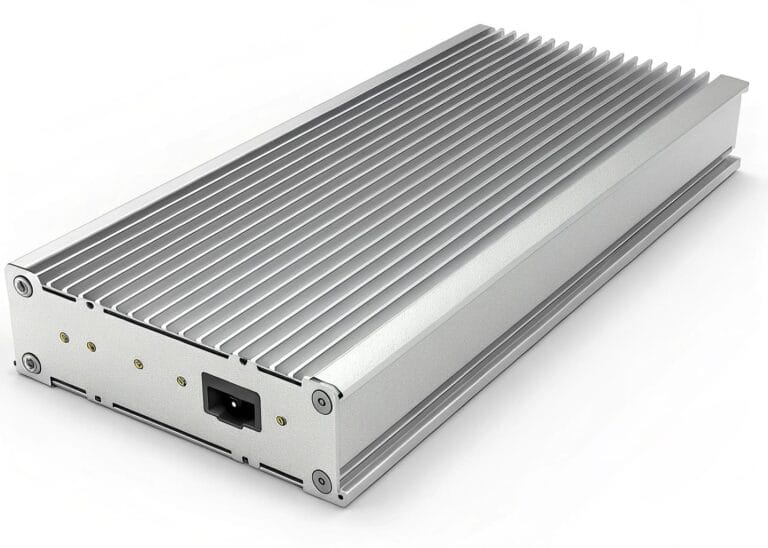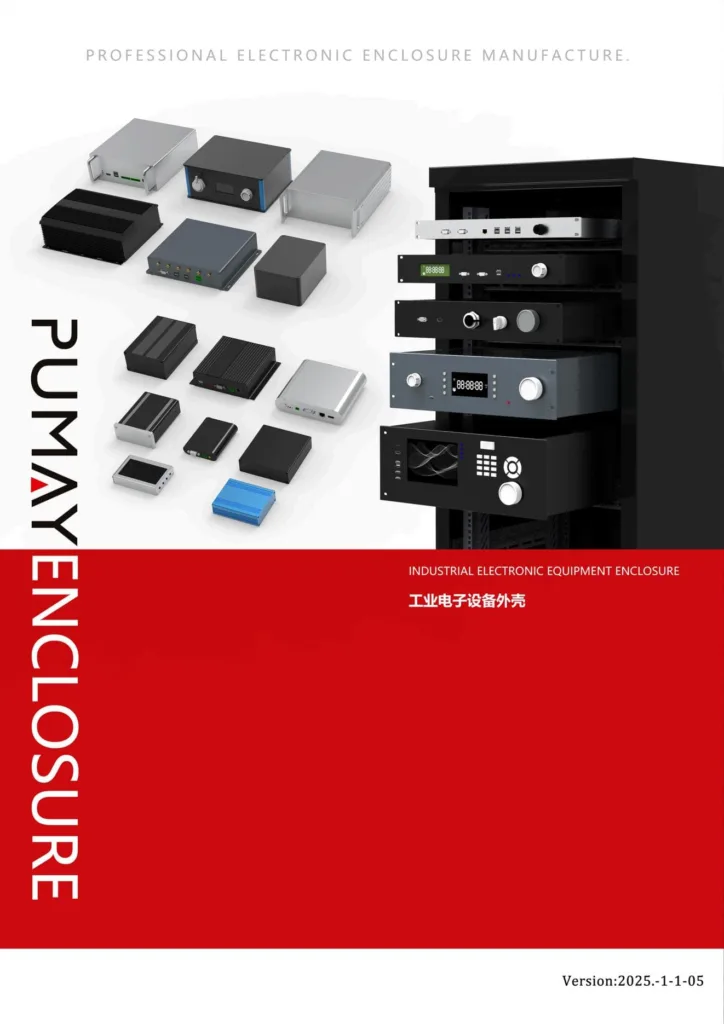Your 5G base stations are exposed to harsh weather. Lightning and salt spray can cause catastrophic failures. Proper enclosure design is your only defense against costly downtime and repairs.
Protect 5G enclosures[^1] by using conductive aluminum for grounding against lightning, applying multi-layer corrosion-resistant coatings[^2] to combat salt spray, and ensuring IP67-rated seals[^3]. These integrated design[^4] choices ensure long-term reliability in exposed environments.
 "5G Base Station Outdoor Enclosure"
"5G Base Station Outdoor Enclosure"
These threats are serious, but they are completely manageable with the right engineering approach. Throughout my career, I've helped countless engineers tackle these exact challenges for sensitive outdoor equipment. It's not about adding a feature here or there; it's about a holistic design philosophy from the very beginning. Getting this right saves you from field failures that can damage your brand's reputation and lead to enormous costs. Let's delve into the specific strategies for each threat.
How Can You Design an Enclosure for Effective Lightning Protection?
A single lightning strike can destroy thousands of dollars of sensitive 5G equipment. Is your enclosure just a box, or is it an active part of your lightning protection system[^5]?
Effective lightning protection involves creating a continuous, low-impedance path to ground. Use conductive aluminum[^6], ensure all panels are electrically bonded[^7], and incorporate a dedicated external grounding lug[^8] securely connected to the chassis and the site's earth ground.
 "Lightning Protection Grounding Lug"
"Lightning Protection Grounding Lug"
I remember a project for a coastal deployment where the client was focused solely on the electronics inside. They treated the enclosure as a simple container. We had to shift their thinking. An enclosure isn't just a shield; it's a conductor. It's meant to safely channel the immense energy of a lightning strike away from the sensitive components and into the ground. This requires more than just picking a metal box. We need to think about the entire electrical path. Are the front and rear panels electrically bonded[^7] to the main body? Is there a dedicated, robust grounding point? A simple painted screw won't do; it needs to be a clean metal-to-metal connection. We often specify a stainless steel grounding stud to prevent galvanic corrosion while ensuring a reliable connection for the life of the product.
Key Elements of Lightning Protection
| Element | Design Principle | Why It's Critical |
|---|---|---|
| Material Choice | Use a high-conductivity aluminum alloy like 6063-T5. | It provides a low-impedance path[^9] for the current to flow, minimizing voltage rise that could damage electronics. |
| Electrical Bonding | Ensure all separate panels are electrically connected with gaskets or direct contact. | This prevents arcing between panels during a strike and maintains the integrity of the Faraday cage effect. |
| Grounding Lug | Integrate a dedicated, robust external grounding point on the chassis. | This creates a secure, reliable connection from the enclosure to the tower's main earth ground system. |
What are the Best Strategies for Preventing Salt Spray Corrosion?
Coastal air is relentlessly corrosive. Salt spray can eat through standard finishes in months, leading to water ingress and system failure. You need a multi-layered defense to ensure longevity.
The best strategy is a two-layer defense system. First, use a chromate conversion coating[^10] or anodizing on the aluminum as a primer. Then, apply a thick, durable layer of outdoor-grade powder coating[^11]. This combination creates a robust barrier that prevents salt from reaching the metal.
 "Salt Spray Corrosion Protection Coating"
"Salt Spray Corrosion Protection Coating"
I've seen enclosures deployed near the sea that looked decades old after just one year. The paint was peeling, and white aluminum oxide was blooming underneath. This happens when you rely on a single layer of protection. A small scratch in a powder-coated surface becomes a gateway for corrosion to creep underneath. This is why our integrated manufacturing line handles a multi-stage process. The first step, anodizing[^12] or a conversion coating, chemically alters the surface of the aluminum. It creates a base layer that is inherently corrosion-resistant and provides an excellent surface for the next layer to adhere to. The top layer, a high-quality powder coat, provides the primary physical barrier against salt, moisture, and UV radiation. This dual-layer approach means that even if the top coat gets scratched, the underlying protective layer prevents the corrosion from spreading, dramatically extending the product's life.
Comparing Surface Treatments for Coastal Use
| Treatment | Pros | Cons | Best Use |
|---|---|---|---|
| Anodizing Alone | Hard, durable, part of the metal. Good corrosion resistance. | Can be brittle, limited color options, can still pit in high-salt environments. | Not recommended as the sole protection in coastal areas. |
| Powder Coat Alone | Excellent UV resistance, wide color range, thick protective layer. | A single scratch can compromise the entire system, allowing corrosion to spread underneath. | Suitable for non-coastal outdoor use. |
| Dual System | Combines the adhesion and base protection of anodizing[^12] with the barrier of a powder coat. | Higher initial cost and longer processing time. | Essential for critical applications in coastal or marine environments. |
How Do You Balance Protection with Essential Heat Dissipation?
You've sealed your enclosure against the elements. But now, the powerful 5G electronics inside are cooking. How do you let heat out while keeping water and salt away?
Balance protection and cooling by using the aluminum enclosure itself as a heatsink. Design custom extrusion profiles[^13] with integrated external cooling fins to maximize the surface area for passive heat dissipation[^14]n](https://www.simscale.com/blog/heat-dissipation-electronics/)[^15] without compromising the IP rating.
 "Extruded Aluminum with Integrated Heatsink Fins"
"Extruded Aluminum with Integrated Heatsink Fins"
This is the ultimate engineering challenge for a product engineer like Jeff working on outdoor electronics. The device needs an IP67 rating, which means no vents. But the 5G hardware generates a significant thermal load. The solution is not to add more components like fans, which would fail in this harsh environment, but to make the enclosure itself work harder. By designing a custom extrusion profile, we can build the heatsink directly into the chassis of the enclosure. The heat from the internal components conducts through the aluminum to the external fins, where it can safely dissipate into the surrounding air through natural convection. The key is maximizing the external surface area while maintaining a completely sealed internal volume. This integrated approach is far more reliable and effective than bolting on separate heatsinks, which introduce thermal resistance at the contact point and create another potential site for corrosion to start.
The Integrated Design Advantage
| Feature | Traditional Approach | Integrated Design Approach |
|---|---|---|
| Heatsink | A separate component is bolted onto a flat enclosure wall. | Cooling fins are designed directly into the main body extrusion. |
| Sealing | Multiple potential failure points at seams and bolt holes. | Fewer seams and a simpler gasket design lead to a more reliable IP seal. |
| Reliability | Thermal paste can dry out; bolts can corrode and loosen. | One solid piece of aluminum provides a consistent, reliable thermal path. |
Conclusion
A successful 5G outdoor enclosure requires an integrated design[^4]. By addressing lightning, salt spray, and heat dissipation[^15] together, you create a robust, reliable product that truly withstands the elements.
---
[^1]: Explore this link to understand the best materials that enhance the durability and performance of 5G enclosures.
[^2]: Discover various coatings that can protect outdoor equipment from harsh environmental conditions.
[^3]: Find out why IP67-rated seals are crucial for protecting electronic devices from water and dust.
[^4]: Discover the benefits of integrated design approaches in creating reliable and efficient products.
[^5]: This resource will guide you in creating a reliable lightning protection system for sensitive equipment.
[^6]: Learn how conductive aluminum can significantly enhance grounding systems and protect sensitive equipment.
[^7]: Explore the significance of electrical bonding in preventing arcing and ensuring safety.
[^8]: Learn about the critical role of grounding lugs in maintaining electrical safety and performance.
[^9]: Understanding low-impedance paths can help you design safer and more efficient electrical systems.
[^10]: Discover the advantages of chromate conversion coatings for enhancing corrosion resistance.
[^11]: Explore the benefits of powder coating in providing a durable finish for outdoor equipment.
[^12]: Learn how anodizing can significantly improve the durability and lifespan of aluminum products.
[^13]: Learn how custom extrusion profiles can optimize design and functionality in enclosures.
[^14]: Explore the concept of passive heat dissipation and its importance in electronic design.
[^15]: Find effective methods to enhance heat dissipation in electronic enclosures for better performance.




